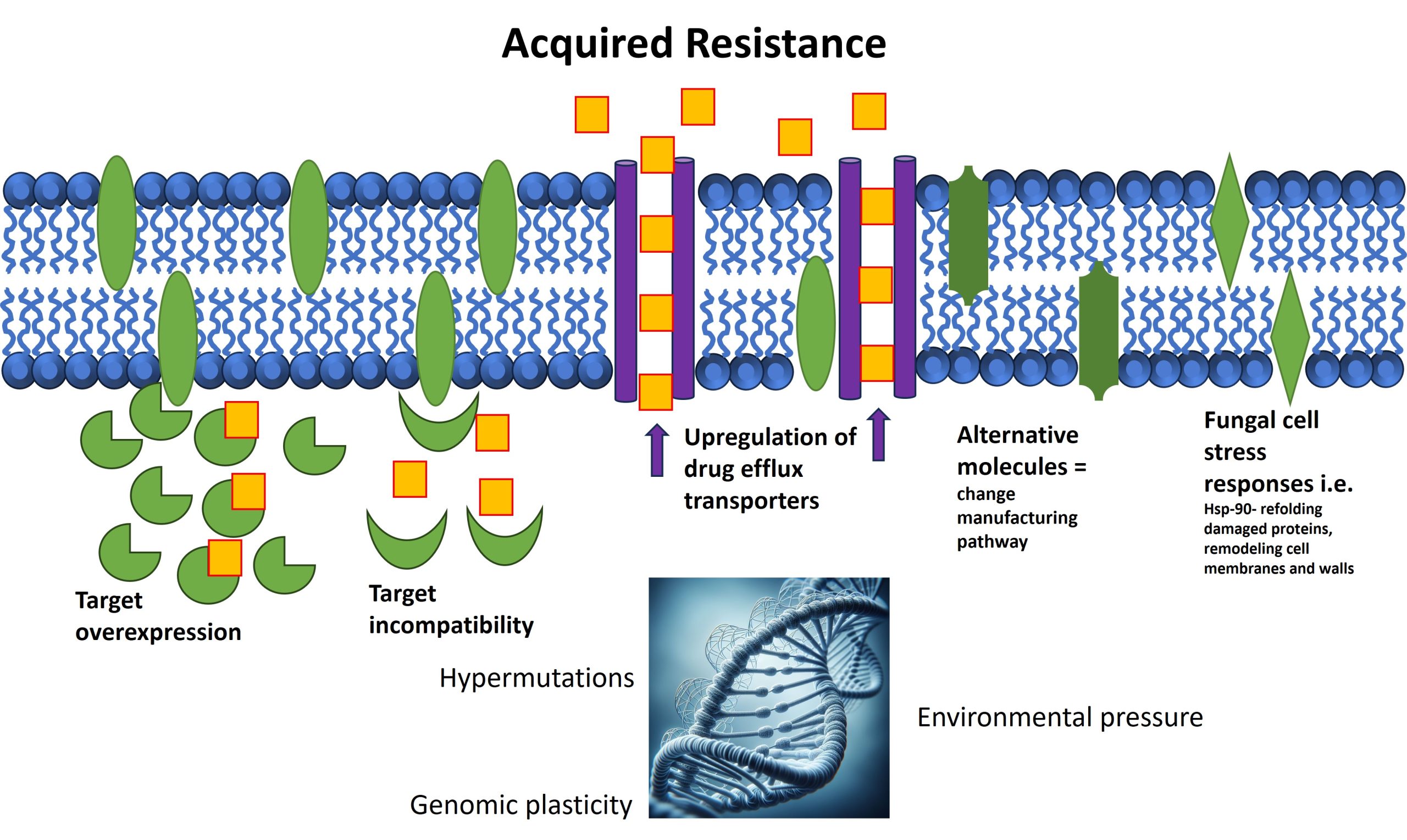1 Antifungal agents
INTRODUCTION
This chapter is on antifungal agents. Fungal infections in animals are emerging diseases. Hence the need for effective antifungal agents.
This is because:
- Animals, especially companion animals are living longer due to better nutrition and health care.
- Tropical environments are conducive to year round survival of fungi and global warming is increasing the the geographical area where fungi can thrive.
- Most secondary bacterial infections are treatable. However, when the primary cause has not been resolved less invasive microbes like fungi can proliferate and invade tissue.
- Host immune mechanisms struggle to eliminate fungi.
However, only a few classes of antifungals are safe to use and readily available. They are:
- allylamine
- triazoles
- polyenes
- echinocandins
- griseofulvin
This means that antifungal resistance is also developing.
Allylamine – Terbinafine
Terbinafine inhibits an enzyme called fungal squalene epoxidase blocking the conversion of squalene to lanosterol in the ergosterol manufacturing pathway. It is available as a systemic or topical product and accumulates in the skin, hair and nails.
triAZOLES
This is the largest class of antifungals and the safest to use. They target the enzyme lanosterol demethylase which blocks the production of ergosterol from lanosterol and allows the accumulation of toxic sterol intermediates. These toxic sterol intermediates accumulate in the fungal cell membrane resulting in membrane damage which will prevent growth and replication of the fungi. Commonly used systemic antifungals are fluconazole, itraconazole, voriconazole and posaconazole. Commonly used topical triazoles are ketoconazole, miconazole and enilconazole.
polyenes
The polyenes such as amphotericin B and nystatin form large extramembraneous aggregates that bind to and extract sterols from the inner cell membrane. This creates channels in the fungal cell membrane causing ions like potassium and sodium to leak out resulting in fluid loss and cell death.
echinocandins
The echinocandins like caspofungin, micafungin and anidulafungin inhibit 1,3 β-D-glucan synthase which manufacture β-1,3-D-glucan an essential sugar in the outer cell membrane (wall). This weakens the cell wall and fungi are unable to withstand osmotic pressure and will rupture. This will lead to death of the fungus.
griseofulvin
Griseofulvin is actively taken up by dermatophytes where it binds to tubulin, a major component of microtubules. Microtubules are used in mitosis. Thus cell division is inhibited. Griseofulvin binds to keratin trapping fungi within keratinised cells. When the cells are sloughed the fungi will be eliminated. This oral medication must be taken with a fatty meal to enhance its absorption. It is only used to treat dermatophytosis.
antifungal resistance
The development of antifungal resistance to the azoles and echinocandins is becoming very common with a slower development of resistance to the polyenes.
Mechanisms of acquired resistance:
- Alteration or overexpression of the drug target gene
- Preventing the production of toxic sterols with the accumulation of alternative sterols – this results in cross resistance with both the azoles and polyenes
- Upregulation of multidrug (ABC) efflux transporters increasing drug removal from fungal cells

